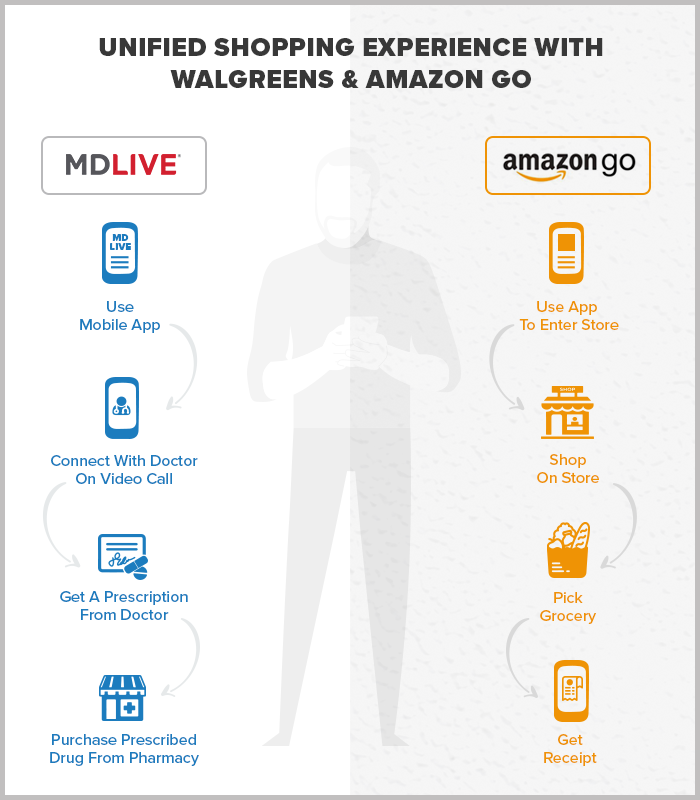Updated On: 11th Nov’19
In a world, where experience determines the extent of customer satisfaction, omnichannel is a much-needed factor that influences the experience. Providing the perfect omnichannel experience depends on multiple factors. Before designing an omnichannel strategy, business owners should ask the following questions:
- How to gain analytical information on omnichannel and forecast trends?
- How to ensure customers receive the same message through each channel?
- How to ensure a smooth transition from online to offline?
- Which omnichannel policies to formulate for customer-friendly experience?
To educate business owners and help them devise the perfect omnichannel strategy, we have tried to answer the above questions in this blog post. Without further ado, continue reading to know more about designing an omnichannel strategy.
How to gain analytical information on omnichannel and forecast trends?
For more return on investment (ROI), one is required to measure and make changes in the omnichannel strategy. To enable a business owner to do so, analytics applications such as Pointillist and SAS provide meaningful information on relevant key performance indicators (KPIs). Such applications can help a business owner keep a close eye on omnichannel analytics be it offline or online interaction with a potential customer.
 SAS Analytics
SAS Analytics
How to ensure customers receive the same message through each channel?
Offline and online channels represent different marketing avenues. It can be a banner advertisement in a brick and more store, storefront, Twitter banner or post, Facebook banner or post, etc., no matter which platform it is, the core messaging goal should be consistent.
Using the same brand imagery across different channels is highly recommended. A more recent innovation in the internet of things (IoT) has enabled brands to introduce personalization in the offline world using beacons. The core messaging should be the same and by introducing personalization in an ecommerce website for better conversion.
How to ensure a smooth transition from online to offline and vice-versa?
After a meticulous analysis of the use case, one needs to find important touchpoints and ensure that the flow is directed towards user experience and conversion. To elaborate this further, we would like to mention two examples ÔÇô Walgreens and Amazon.
Walgreens – The second largest pharmacy store chain in the United States, Walgreens has introduced an MD Live app through which a user can pay to have a live chat with a physician. And if necessary, the physician can also directly write a prescription. The prescribed drugs can be purchased at one of the store locations.
Amazon – Amazon launched the cashier-free chain of grocery stores known as Amazon Go, which gives the best experience with the amalgamation of online and offline commerce. A person can walk into the Amazon Go store and buy anything he/she wants. Once a product is picked, the billing is done automatically.
As in the above two examples, mobile is the epicenter for real-time interaction. Amplifying the customer behavior, the culture of immediacy is driving mobile first interactions. Customers expect businesses to participate in the culture of immediacy through mobile services. Mobile has provided customers with unprecedented access to information, simplified the way customers can evaluate and buy products.
Although customers still value the human connection and want technology to enhance the connection and not replace sales and service representatives.

Which omnichannel policies to formulate for customer-friendly experience?
The transition from offline to online can reduce sales in the long run, if omnichannel-friendly policies are not formulated. In our research, we came across several brands that are working towards improving their omnichannel experience but lack policies to impart a superior omnichannel experience. Be it any policy such as privacy, return, refund, reward points, etc., relevant changes are to be made that blur the distance between offline and online.
Elaborating some strategies for a successful omnichannel transformation:
Outline a strategy and design principle
In order to deliver an excellent customer experience, businesses should scheme the customer service journeys by striking an optimal balance of speed, transparency, and interaction with each channel or the multiple touchpoints. Every point of the customer journey needs to be optimized rather than focussing on individual touchpoints. The success of the omnichannel strategy entirely depends upon rightly understanding the customer based on their digital behaviors and then offering the right channels. Acc. to research by Mckinsey, digital customers can be identified onto four different personas:
- Those consumers who are digital by lifestyle ie. those consumers who have their life integrated into digital completely and donÔÇÖt easily perceive the difference between a traditional channel and digital.
- Those consumers who keenly enjoy the advantages of digital. These consumers are free willing to choose digital channels. These consumers are highest in numbers.
- Then there are those consumers who only engage with digitals channels, only when it is necessary.
The least percentage of consumers who prefer to live in the non-digital world shop in brick and mortar stores.
Devising customer journey services primarily for each segment and persona profile helps to differentiate the engagement strategies and the necessary investment for each channel.
Test, Fail, Adopt Methodology
To successfully accomplish the omnichannel strategy, the business should resolve these areas first:
- Which is the most important customer journey in terms of the cost to the business?
- Determine the complexities involved in enhancing the customer journey
- Importance of the specific journey to the customer
Companies should apply test, fail, adapt the methodology to design the customer journey. The methodology involves tactics like design thinking, live testing of prototypes, ideation with customers to jointly build customer journeys.
Administer Economic Realities
Besides defining the customer journeys and segregating the role of each channel, it is very important to have a strong hold on the economic implications. The economic implications could include cross channel assortments, pricing decisions, customer relationship management and finally handling the delivery scenarios.
Crafting a balance between these factors and optimizing them to achieve a winning strategy becomes complex. Follow the guidelines to ensure it:
- Businesses need sophisticated models that cater to all relevant factors like price, shipping costs, end of season discounts, etc.
- Set clear directions for dynamic pricing based on what competitors are doing and the amount of inventory left in the stock.
- Modifications to the supply change like automated picking technologies at distribution centers, more friendly and sturdy packaging, variations in the click and collect formats, etc.
In all, the most essential key requisites for a successful omnichannel experience:
- Brick complementary to click
- Enhance mobile purchasing experience
- Exploit the return channel as a sales opportunity
- Put userÔÇÖs and their needs at the center of the business.



